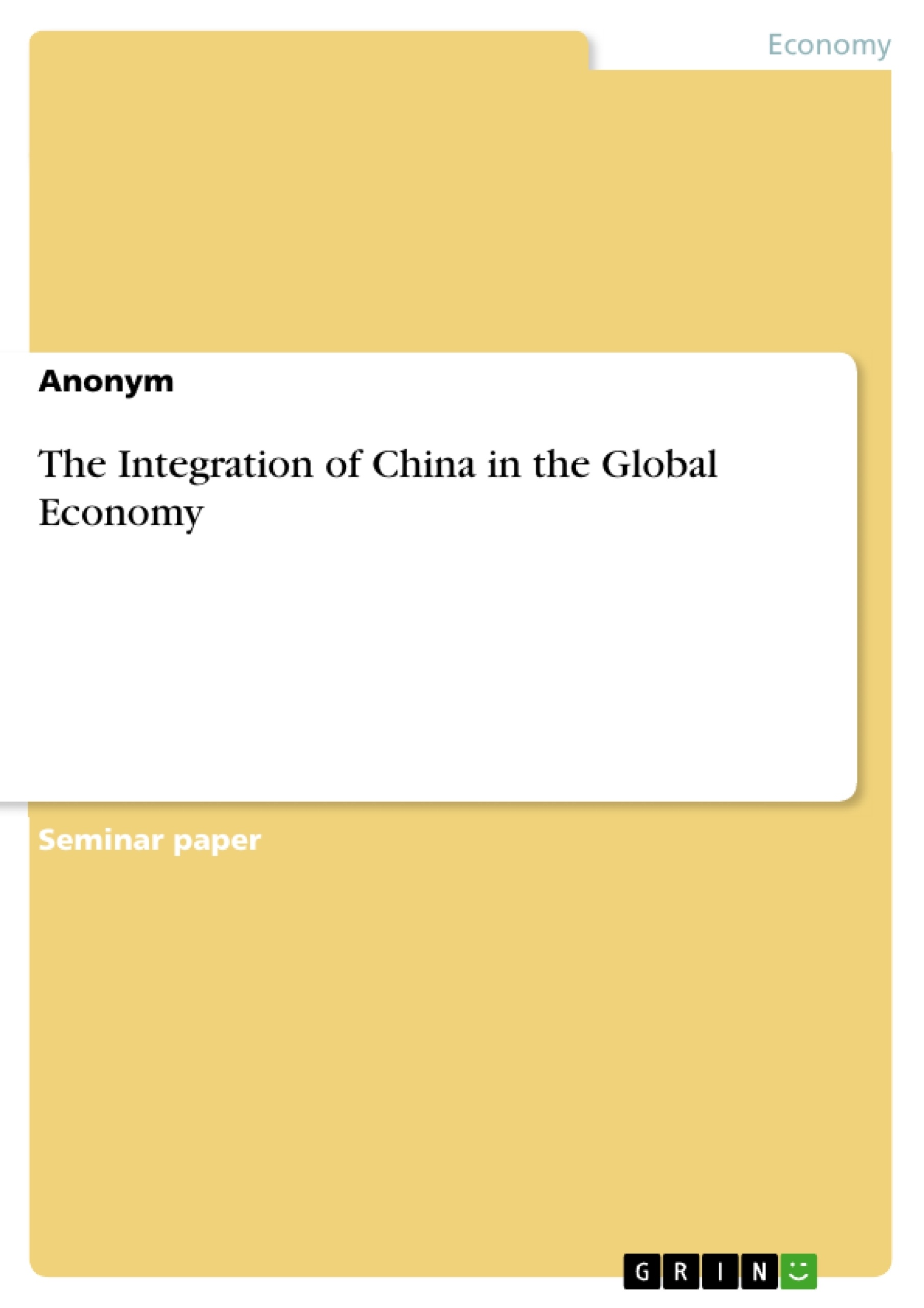The aim of this paper is to trace China's increasing integration in the world economy. In this context, the developments of the country’s foreign trade policy as well as those of the trade and the investments will be examined. Subsequently, the future prospects of China's foreign trade will be the focus of attention, with particular reference to the country's monetary regime, its Going-out strategy and the regional economic integration in Asia. The following remarks will be devoted to the key events that have paved the way for China's changing role in the global economy in the 21st century. Finally, the most recent, forward-looking measures taken by the Chinese government will be discussed, which are essential for strengthening China's international presence and its competitiveness. After a brief insight into the downside of China's global interconnection, the work is rounded off by a conclusion.
When the Chinese government under Deng Xiaoping initiated the Chinese policy of "opening up to the outside world" in 1978, no one could have foreseen the dynamics with which this modernization course would continue or that it would change China's influence on world markets and its perception in the international environment so markedly. The opening policy in the 80s and 90s was characterized by a step-by-step development according to the principle: crossing the river from stone to stone. Thus, China gradually developed from one of the poorest nations to today's second largest economy, to which a significant role is attributed worldwide. Not only as a location for investment, but also as an international competitor for markets and resources.
Inhaltsverzeichnis (Table of Contents)
- Introduction
- China's Integration in the global economy
- China's foreign trade policy in transition
- The phases of the Chinese reform and opening policy
- Beginnings of the opening policy
- Strategy of export orientation
- Expansion of opening policy and the will of joining the "World Trade Organisation (WTO)"
- Further export orientation and the WTO- entry
- Structures and characteristics of the Chinese foreign trade
- Foreign Direct Investments in China
- Future Prospects of the Chinese foreign trade policy
- The development of the Chinese monetary regime
- Regional economic integration
- China's Going – Out Strategy and FDI outflows
- China's changing role in the 21st century
- WTO regulations vs. own interests
- The global Financial Crisis
- Xi Jinping and the economic realignment
- Setting the strategic course for the future
- China's rise to technological leadership
- China's development into a global investor
- China's active transformation of international conditions
- The downside of global interconnection
Zielsetzung und Themenschwerpunkte (Objectives and Key Themes)
This seminar paper aims to explore China's integration into the global economy, examining its foreign trade policy, the role of foreign direct investments, and the country's evolving position in the 21st century. The paper analyzes the key factors driving China's economic growth and its impact on the global landscape.
- The evolution of China's foreign trade policy and its impact on economic development
- The significance of foreign direct investments (FDI) in China and their role in economic growth
- The influence of China's economic policies on the global economy
- China's role as a rising economic power and its impact on international relations
- The challenges and opportunities facing China in its ongoing integration into the global economy
Zusammenfassung der Kapitel (Chapter Summaries)
- Introduction: This chapter provides an overview of the topic and introduces the key issues related to China's integration into the global economy.
- China's Integration in the global economy: This chapter examines the key phases of China's reform and opening policy, starting from the beginnings of the opening policy, through the strategy of export orientation, and the expansion of the opening policy leading to the country's entry into the World Trade Organisation (WTO). It also analyzes the characteristics and structures of the Chinese foreign trade.
- China's foreign trade policy in transition: This chapter delves into the details of China's foreign trade policy, focusing on the impact of the WTO entry, the development of the Chinese monetary regime, regional economic integration, and China's "Going – Out Strategy" regarding FDI outflows.
- Future Prospects of the Chinese foreign trade policy: This chapter discusses the evolving role of China in the 21st century, taking into account factors like WTO regulations, the global financial crisis, and Xi Jinping's economic realignment. It also explores the strategic course for the future, highlighting China's ambition to become a technological leader, a global investor, and an active transformer of international conditions.
Schlüsselwörter (Keywords)
The key themes and concepts explored in this paper include China's economic integration, foreign trade policy, foreign direct investments, WTO regulations, regional economic integration, "Going – Out Strategy", economic realignment, and China's role as a global economic power.
- Quote paper
- Anonym (Author), 2020, The Integration of China in the Global Economy, Munich, GRIN Verlag, https://www.grin.com/document/1040321



